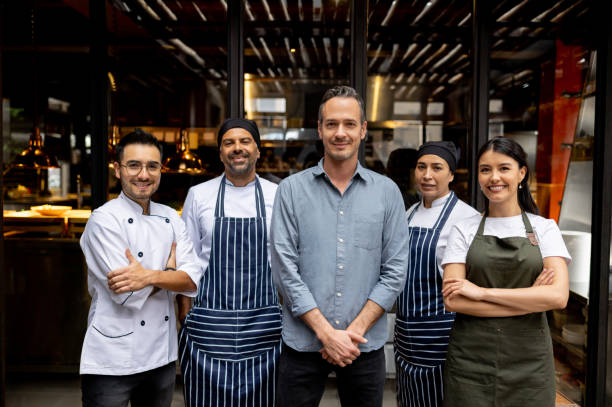
The restaurant industry thrives on delivering exceptional dining experiences, but the backbone of that success is a reliable, skilled team. From servers to line cooks to managers, the right staff can make or break a restaurant. Yet, hiring in this fast-paced industry is fraught with challenges—high turnover, time constraints, and inconsistent hiring processes. Below, we explore these issues and how modern solutions, like video-based screening, can help restaurants hire faster, smarter, and with less turnover.
1. The Time Crunch of Filling Open Roles
Restaurants operate on tight schedules. A single no-show or understaffed shift can disrupt service, frustrate customers, and overburden the team. Industry reports highlight that open positions must be filled quickly to maintain operations. Yet, traditional hiring methods—phone screens, scheduling interviews, and sifting through resumes—eat up valuable time.
A solution lies in streamlining the initial screening process. Asynchronous video interviews allow candidates to respond to questions at their convenience, typically within a day or two. Managers can review these responses on their own schedule, evaluating multiple applicants in the time it would take to conduct a single phone call. This approach accelerates hiring without compromising on candidate quality.
2. Battling High Turnover Rates
Turnover is a persistent issue, with rates in the restaurant industry often exceeding 70% annually. Each departure drains resources through rehiring and retraining, not to mention the impact on team morale and customer satisfaction. Poor-fit hires are a key driver, as resumes often fail to reveal critical soft skills like enthusiasm or communication.
Video-based screening offers a way to assess candidates beyond their resumes. By observing their personality, professionalism, and energy in video responses, managers gain insights into cultural fit. For customer-facing roles like servers or hosts, this helps identify candidates likely to excel and stay longer, reducing the turnover cycle.
3. Inconsistent Screening Across Diverse Roles
Restaurants need a wide range of talent, from dishwashers to general managers, each requiring distinct skills. Traditional interviews can be inconsistent, with different managers asking varied questions or relying on gut feelings. This makes it hard to compare candidates objectively, especially for specialized roles.
Customizable screening tools address this by allowing tailored questions for each position. For example, kitchen staff can be asked about handling high-pressure rushes, servers about managing difficult customers, and managers about leadership strategies. Standardized, role-specific evaluations ensure fair assessments and better hiring decisions across the board.
4. Challenges of Multi-Location Hiring
For multi-location restaurants or franchises, maintaining consistent hiring quality across sites is a hurdle. Differing standards or processes can lead to uneven service quality, weakening the brand. Centralizing oversight while allowing local flexibility is key but often difficult with traditional methods.
A standardized screening platform can unify the process. Corporate or regional teams can review candidate responses from all locations, ensuring hires meet brand standards. This is especially effective for high-turnover roles, helping maintain consistent service quality across every restaurant in the group.
5. Balancing Efficiency with Personal Connection
Restaurant managers are stretched thin, juggling operations, staff schedules, and customer needs. Spending hours on initial interviews with candidates who may not fit is inefficient. Yet, hiring is too critical to fully automate—personal judgment remains essential.
Video-based screening strikes a balance. It filters out unsuitable candidates early, allowing managers to focus on top prospects for in-person interviews. This saves time while preserving the human element, ensuring hiring decisions align with the restaurant’s unique needs and culture.
6. Improving the Candidate Experience
Ghosting and no-shows plague restaurant hiring, often because candidates find the process disorganized or impersonal. A clunky experience can push strong applicants to competitors, especially in a tight labor market.
Modern hiring tools enhance the candidate experience by offering flexibility. For instance, allowing candidates to complete interviews at their convenience—without needing to take time off or wait for a call—creates a positive impression. A smooth, tech-forward process also boosts your brand’s reputation, encouraging referrals and repeat applications.
7. Capturing Walk-Ins and Referrals
Walk-ins and referrals are valuable sources of talent in restaurants, but timing is a challenge. If managers are busy, these leads can go cold. Traditional methods rely on immediate availability, which isn’t always feasible during a busy shift.
Digital solutions, like QR codes posted at entrances or text links for referrals, allow candidates to submit responses later. Managers can review these at their convenience, ensuring no potential hire slips through the cracks. This flexibility maximizes the capture of high-quality candidates from every channel.
8. Minimizing the Cost of Bad Hires
Bad hires are expensive, leading to wasted training, poor customer experiences, and lost sales during understaffed shifts. The cost of a bad hire can ripple across a restaurant’s operations. Slow or ineffective hiring processes exacerbate the problem, delaying recovery.
By improving screening efficiency and candidate insights, modern tools reduce the risk of poor hires. Filtering out unfit applicants early and focusing on those with the right skills and fit saves resources. Often, the investment in a smarter hiring process pays off with just one successful hire.
Building Stronger Restaurant Teams
In the competitive restaurant industry, a great team is the foundation of outstanding service and loyal customers. Traditional hiring methods—slow, inconsistent, and prone to errors—struggle to meet the industry’s demands. By adopting smarter strategies, like video-based screening and standardized processes, restaurants can hire faster, reduce turnover, and build teams that thrive.
Whether you’re running a single café or a multi-unit franchise, addressing these hiring challenges with modern tools empowers you to create a stronger, more reliable workforce. The result? Better service, happier customers, and a more successful business.

